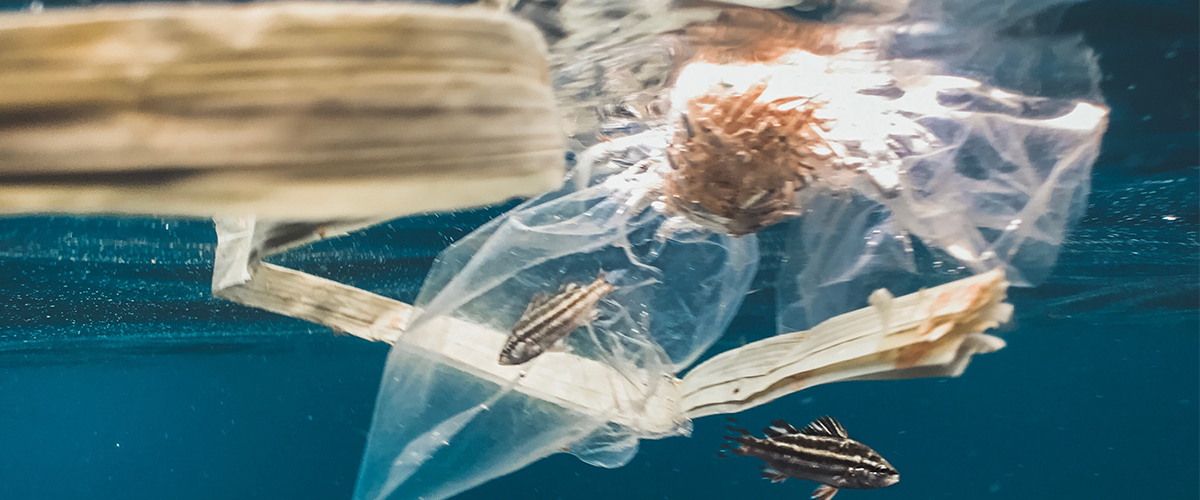Every year, eight million metric tons of trash are dumped into oceans — the equivalent of almost 57,000 blue whales, according to conservation.org. At this rate, plastic will outweigh all ocean creatures by 2050. This is already having devastating consequences for wildlife: about 100,000 marine animals are killed each year because of plastic debris.
The good news, though, is a major uptick in innovations to create environmentally-friendly solutions to clean up waterways and raise awareness about the issue.
The “8th Continent” hopes to solve the problem of garbage in the Pacific Ocean. The goal of the floating station is to not only efficiently sort and recycle trash, but also serve as a multidisciplinary research hub.
- Created by Lenka Petráková, the 8th Continent consists of five parts: the barrier, the collector, the research and education center, greenhouses and living areas. Floating trash is not only collected, but the barrier also captures tidal energy to power the turbine.
- Greenhouses are full of halophilic (salt tolerant) plants and other flora and fauna watered with cleaned wastewater, processed onboard.
Petráková told Designboom, “The live-giving ocean is suffering, and we need to help restore its balance for our planet’s survival. We can not achieve it only by technology, but we need an interdisciplinary platform to educate people and change their relationship with the marine environment for the generations to come.”

(Photo credit: Lenka Petráková/Marko Margeta)
Ocean Cleanup
is turning ocean plastics into consumer products and stopping pollution at the source. The non-profit is increasing production of its Interceptor, a catamaran-type machine, and other solutions to gather trash in hundreds of the most polluted rivers by 2025.
- The Interceptors have a floating barrier that leads trash to a conveyor belt (while allowing vehicles and marine life to pass).
- Sensors, powered with solar energy, alert operators when the onboard dumpsters are full. It’s then taken to local processing facilities.
- Working 24/7, an Interceptor can collect 50,000 kilograms of trash a day and upwards of 100,000 kilograms in optimal conditions. There are three Interceptors in Indonesia Malaysia and the Dominican Republic, with a fourth planned for Vietnam.
The Great Bubble Barrier
relies on bubbles to reduce garbage entering oceans, using a tube that pumps air and trash to the water’s surface. The product, created by a Dutch start-up, also increases oxygen levels, “which stimulates the ecosystem and stops the growth of toxic blue algae.”
- Placed at the bottom of a waterway, the Great Bubble Barrier creates a bubble screen, relying on the natural current to move plastic to catchment areas located on riversides.
- The bubbles don’t impact fish or ships. In fact, the screens absorb waves and sounds, reducing environmental pollution for marine life.
- An easily scalable product, the Great Bubble Barrier could be set up in industrial and urban areas with high levels of plastics. The creators also want to collect data on the types of plastic debris and where it comes from to increase public awareness.
WasteShark
has automated the cleanup process with an aquadrone that collects garbage on the surfaces of lakes and oceans. Created by the Netherlands-based RanMarine Technologies, the WasteShark is a small, but powerful catamaran that can be controlled from a distance.
- Modeled on the whale shark, the world’s biggest fish, the WasteShark also checks environmental indicators like pollution levels while producing zero greenhouse emissions.
- A WasteShark can “swim” for 10 hours with a range of five kilometers and the ability to collect 500 kilograms of debris in a day. It can also work for up to 15 years.
- As RanMarine Technologies CEO Richard Hardiman told Euronews, "What we're trying to do is create a small enough vessel that will get into tight spaces where waste collects, particularly in the harbours and the ports, and stop all that waste being taken out into the greater ocean.”

